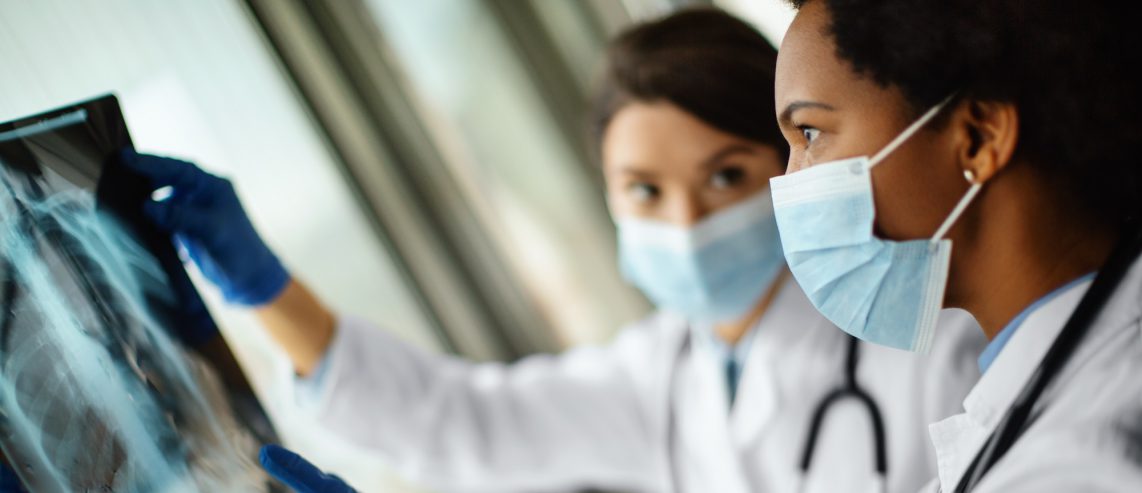Early diagnosis is crucial in the treatment of lung cancer. Now, a new technology called the CelTivity™ Biopsy System from Aquyre Biosciences is helping doctors make earlier diagnoses.
The system allows doctors to biopsy lung tissue and visualize it in the operating room during the procedure. The analysis takes less than two minutes on average, saving time and providing doctors with more clarity.
UPMC Hamot began using CelTivity in April 2022. In doing so, UPMC Hamot became the first hospital in Pennsylvania and one of the first nationwide to use the technology.
“It allows us to have a further level of sophisticated technology and evaluation at the time of lung nodule biopsy for lung cancers,” says Stephen Kovacs, DO, chief, Pulmonary Medicine, UPMC Hamot, and co-director, UPMC Hamot Comprehensive Lung Program.
Learn more about this innovative technology and its benefits to patients.
Never Miss a Beat!
Subscribe to Our HealthBeat Newsletter!
Thank you for subscribing!
You can now select the specific newsletters you'd like to receive.
You are already subscribed.
Subscribe to more newsletters in our email preference center.
Sorry, an error occurred. Please try again later.
Get Healthy Tips Sent to Your Phone!
How Does the In-Surgery Biopsy Process Work?
The CelTivity system analyzes samples of lung nodules that doctors take during biopsies. It can provide information on cell architecture and activity. UPMC uses the system during robotic bronchoscopy procedures.
“Cancer cells and cells that have more of a malignant etiology typically show more activity, especially compared to the surrounding cells,” Dr. Kovacs says. “And we can see that now at the time of biopsy. So it allows us to really confirm while we’re doing the procedure that our biopsy tools are in the right spot and we’re getting good adequate tissue so that the diagnosis can be made as quickly and as efficiently as possible.”
During the procedure, a doctor takes a sample of a lung nodule — a spot on the lung that could indicate several conditions, including cancer. The sample is placed onto a slide, which goes into a holder and then into the CelTivity system, which looks similar to a microscope. The system uses algorithms to evaluate the tissue and registers results in under two minutes.
Once the surgeon examines the images, they can send tissue samples to the pathology lab for more analysis.
Benefits of the In-Surgery Biopsy Process
CelTivity can allow for a quicker, clearer lung cancer diagnosis — helping patients get earlier treatment.
Before, surgeons had to send lung nodule samples taken during a bronchoscopy procedure directly to the lab. They couldn’t analyze the samples themselves in the operating room with accuracy.
“We’d find out later on down the road whether or not we were in the right spot and getting the right tissue that we were hoping to get with these biopsies,” Dr. Kovacs says.
If the sample came back inconclusive, doctors often would need to perform the procedure again. This could potentially lead to delayed treatment if a patient does have cancer.
CelTivity addresses that problem. Surgeons can view the images the system produces and know for sure whether they took the sample from the right place — within two minutes. They then can get as large of a tissue sample as they need for advanced cancer testing.
“Within 90 seconds, I can look at the cellular material up on a screen and have an evaluation of both its size and its activity,” Dr. Kovacs says. “Once I can see that we’re exactly where we thought we were going to be, we’re in the right spot, we’ll continue the biopsy in that area to obtain as much tissue as we need.”
The lab can perform advanced cancer testing and help provide a diagnosis. The process is quicker, more efficient, and safer for patients, Dr. Kovacs says.
“We always want our procedures to be as comprehensive as possible,” he says. “CelTivity allows us to have a higher confidence around the areas of the lung we are performing biopsies. This, in turn, allows us to decrease the amount of tissue we need to take, decreasing anesthesia times, and continuing to improve the safety and efficiency of our procedures.”
The Importance of Early Diagnosis in Lung Cancer
Lung cancer is the leading cause of cancer death in the U.S., according to the American Cancer Society. It accounts for about 1 in 5 cancer deaths, more than colon, prostate, and breast cancers combined. When cancer spreads beyond the lung, it has low survival rates.
For that reason, early diagnosis is key. Earlier diagnosis can lead to earlier treatment and a better chance of a cure. And advanced technologies are allowing doctors to analyze smaller and harder-to-get-to lung nodules for cancer. Those smaller nodules are often the earliest signs of lung cancer.
“It allows us to have a further level of sophisticated technology and evaluation at the time of lung nodule biopsy for lung cancers,” Dr. Kovacs says. “It allows us to really take hold of lung nodules and find these earlier than other places would, typically. When we find them earlier and smaller, we can do the most with them.”
Earlier diagnoses and more cutting-edge treatments have led to better survival rates for lung cancer, the American Cancer Society says. And Dr. Kovacs expects continued improvements in diagnosis and treatment as time goes on.
“The continuous addition of technologies like this shows the continued dedication that UPMC has toward lung cancer diagnosis,” Dr. Kovacs says. “And this isn’t the end. We’re really only at the beginning of where we’re going with this disease process. Our goal is not to stop until it is eradicated. And this work that we’re doing now and what we will be doing in the future continues to strive toward that goal.”
UPMC Hillman Cancer Center is a national leader in cancer care. We are the region’s only Comprehensive Cancer Center, as designated by the National Cancer Institute. And with more than 70 UPMC Hillman locations, people throughout our communities can find world-class cancer care close to home.
For more information on UPMC Hillman, visit our website.
Sources
About UPMC Hillman Cancer Center
When you are facing cancer, you need the best care possible. UPMC Hillman Cancer Center provides world-class cancer care, from diagnosis to treatment, to help you in your cancer battle. We are the only comprehensive cancer center in our region, as designated by the National Cancer Institute. We have more than 70 locations throughout Pennsylvania, Ohio, and New York, with more than 200 oncologists – making it easier for you to find world-class care close to home. Our internationally renowned research team is striving to find new advances in prevention, detection, and treatment. Most of all, we are here for you. Our patient-first approach aims to provide you and your loved ones the care and support you need. To find a provider near you, visit our website.

